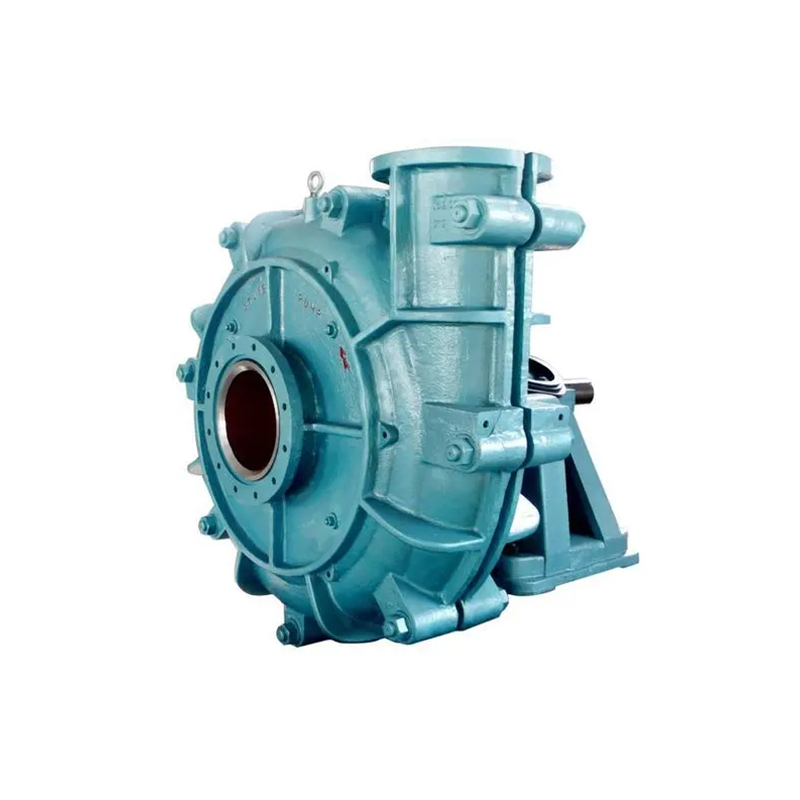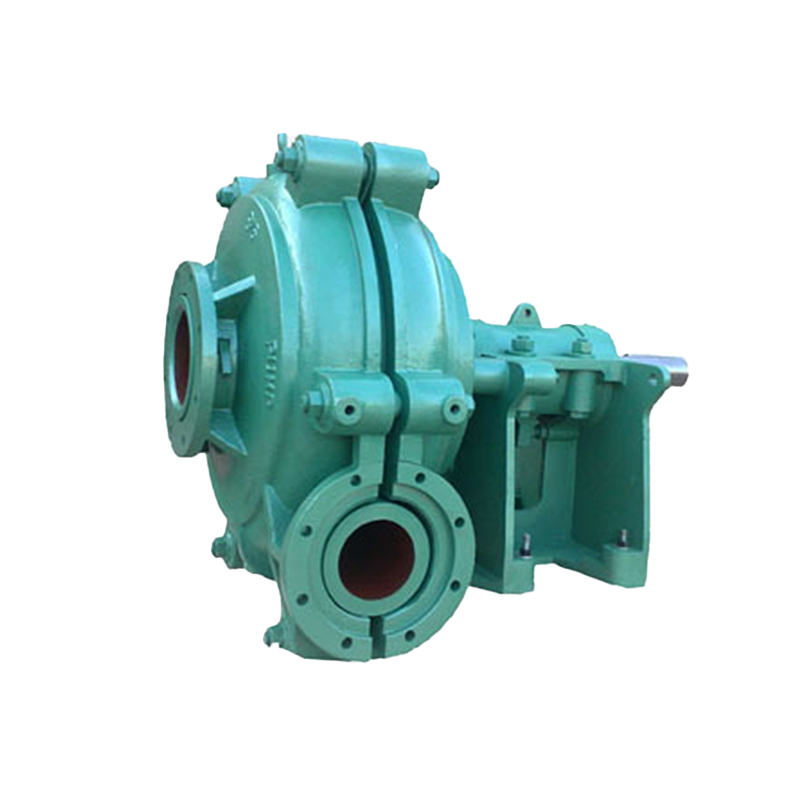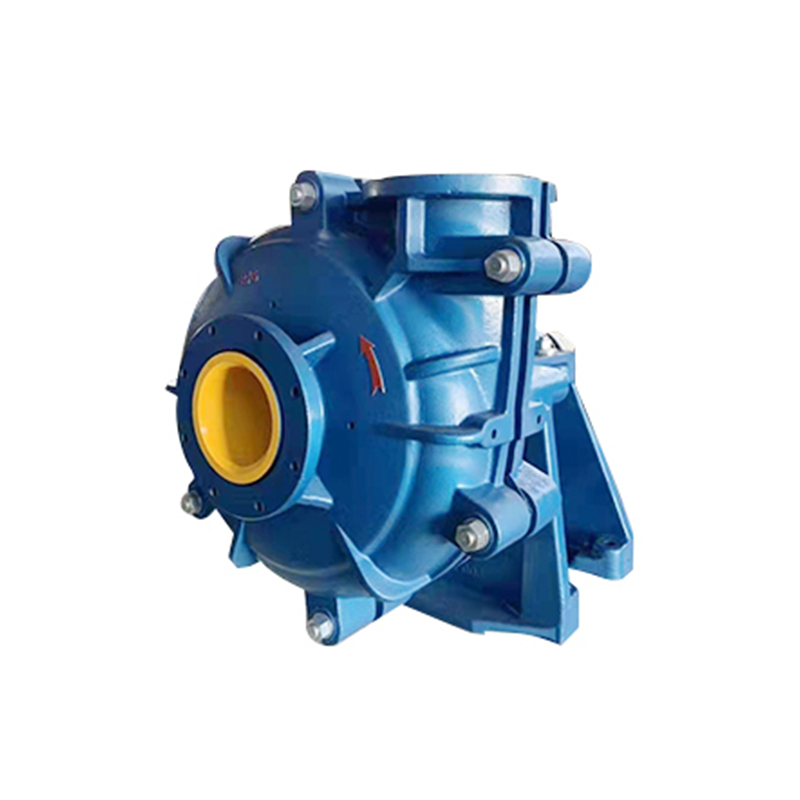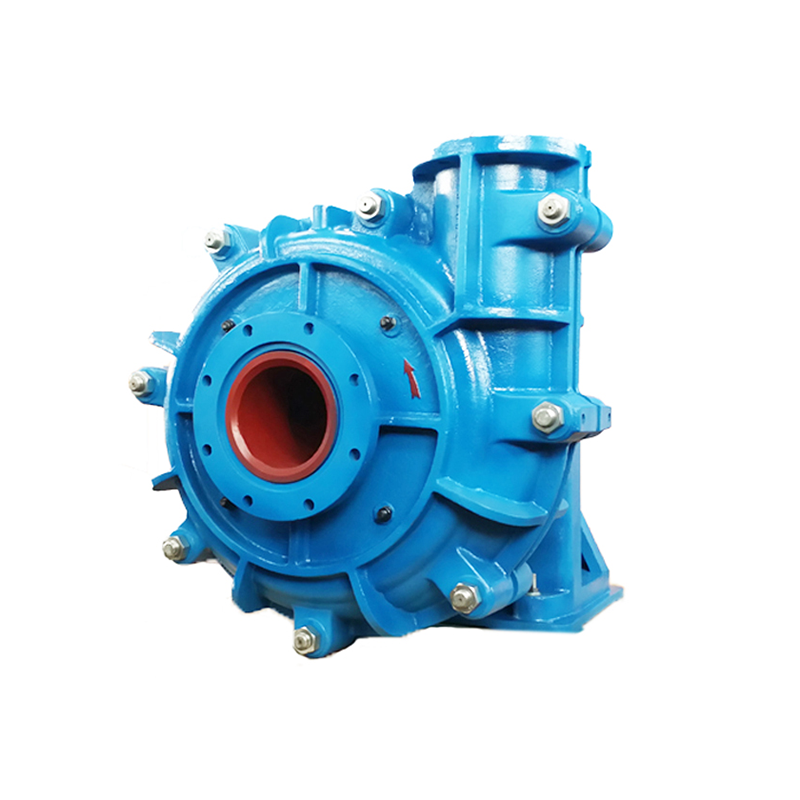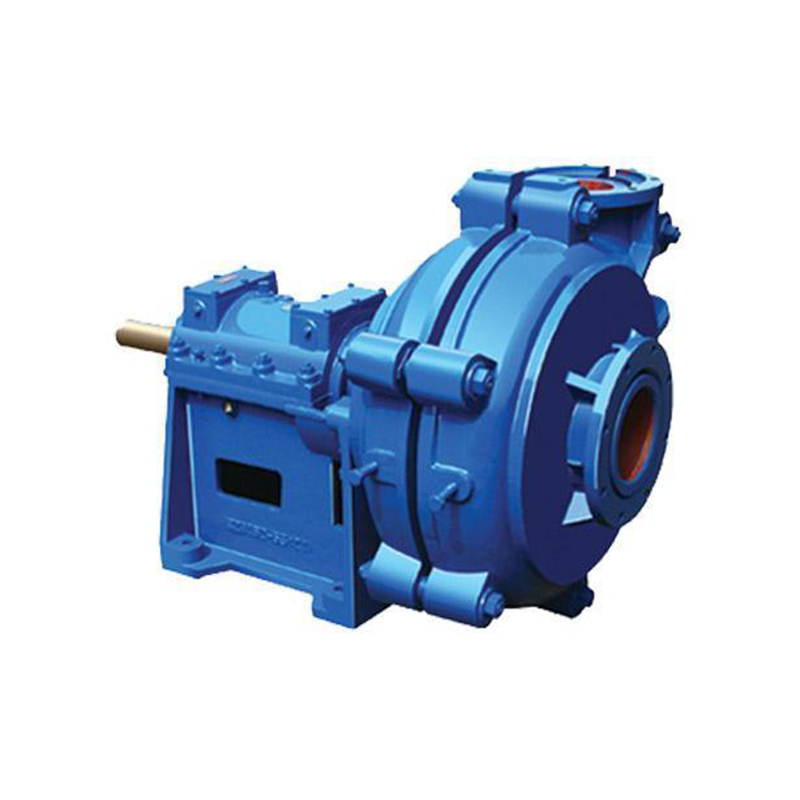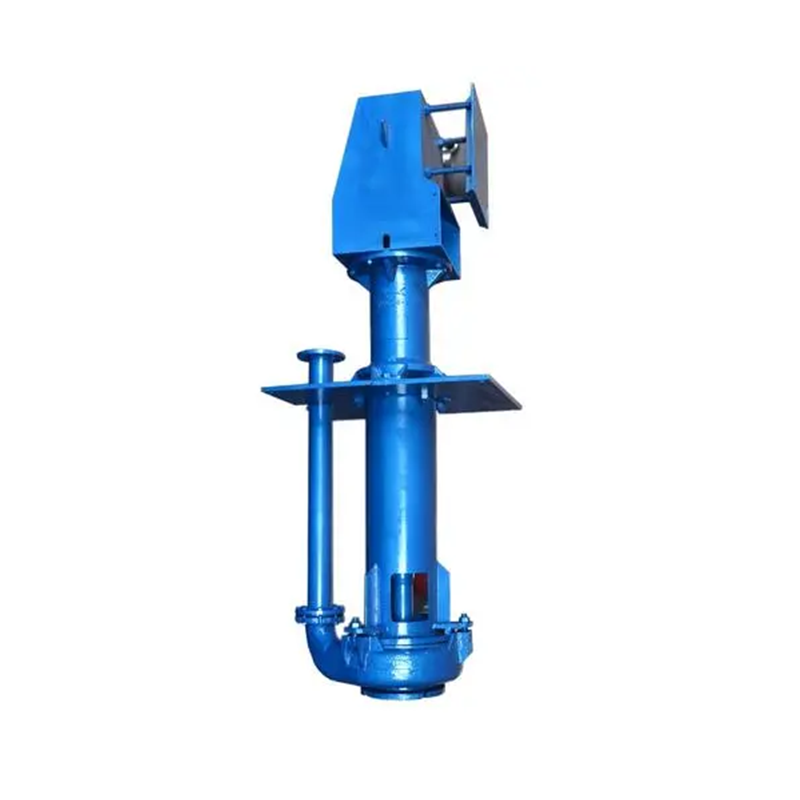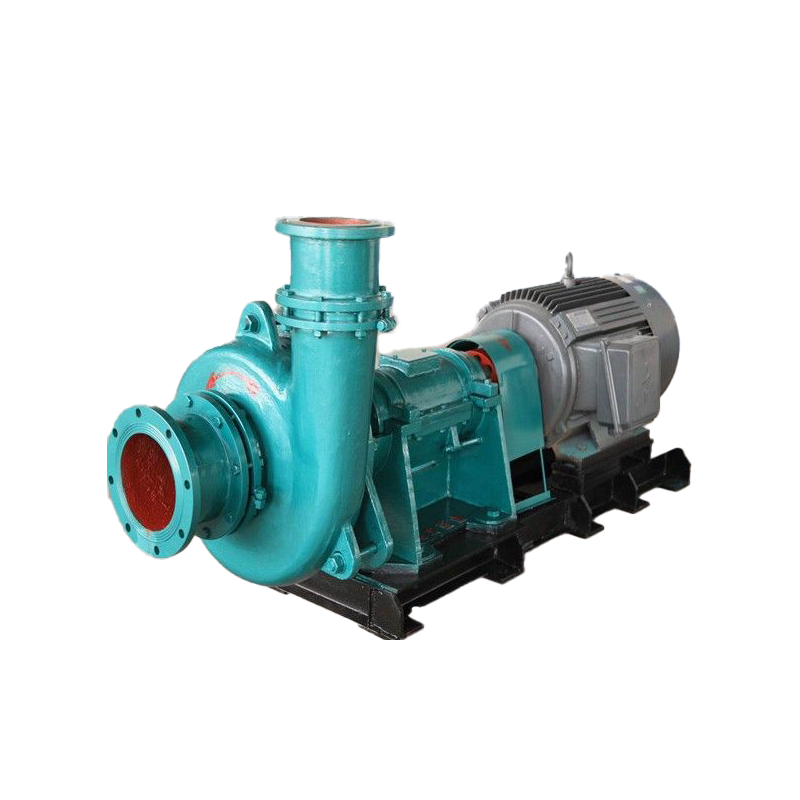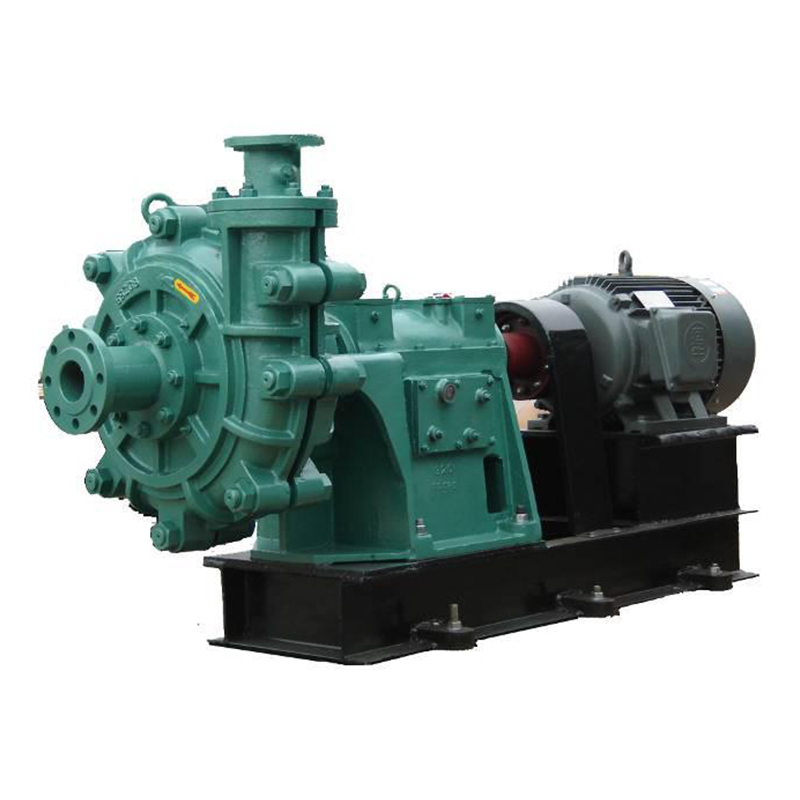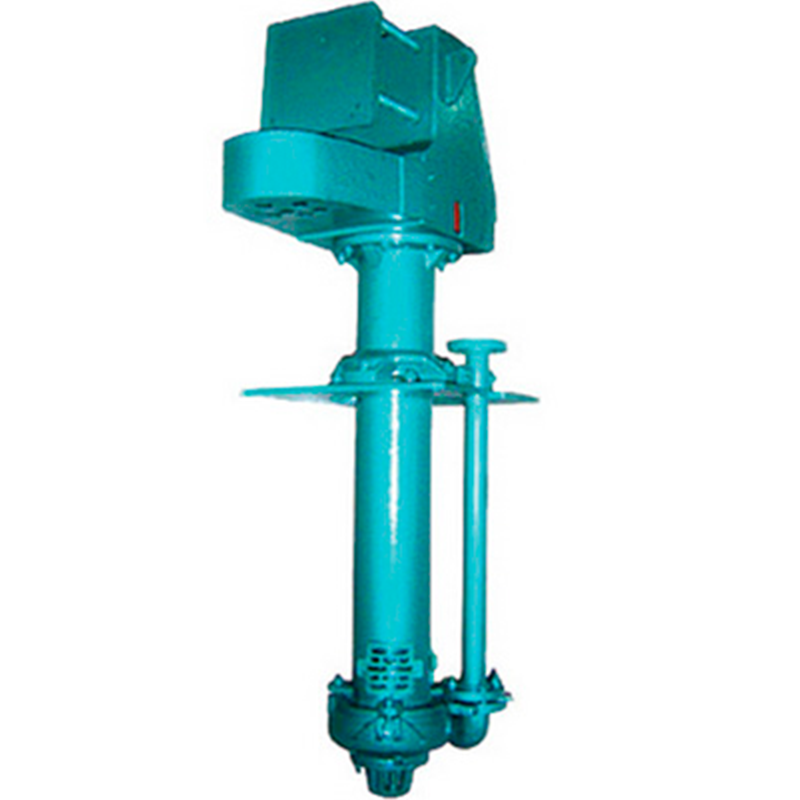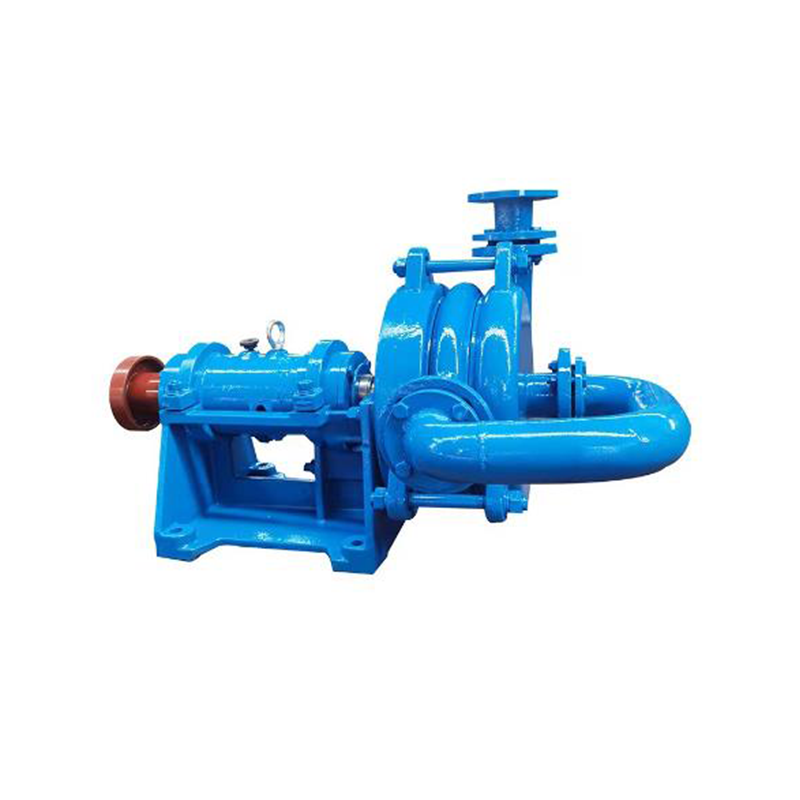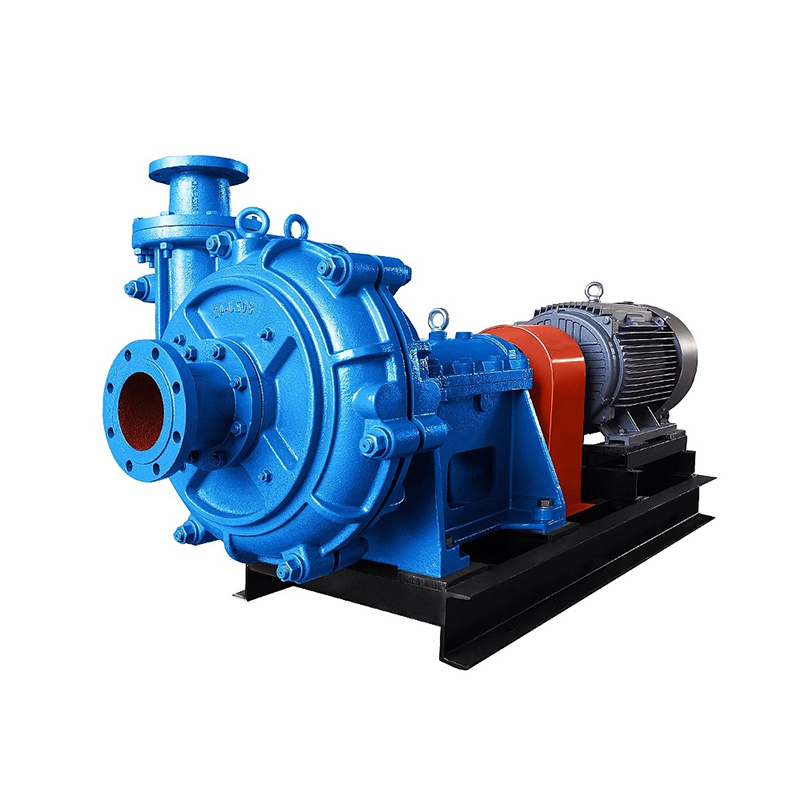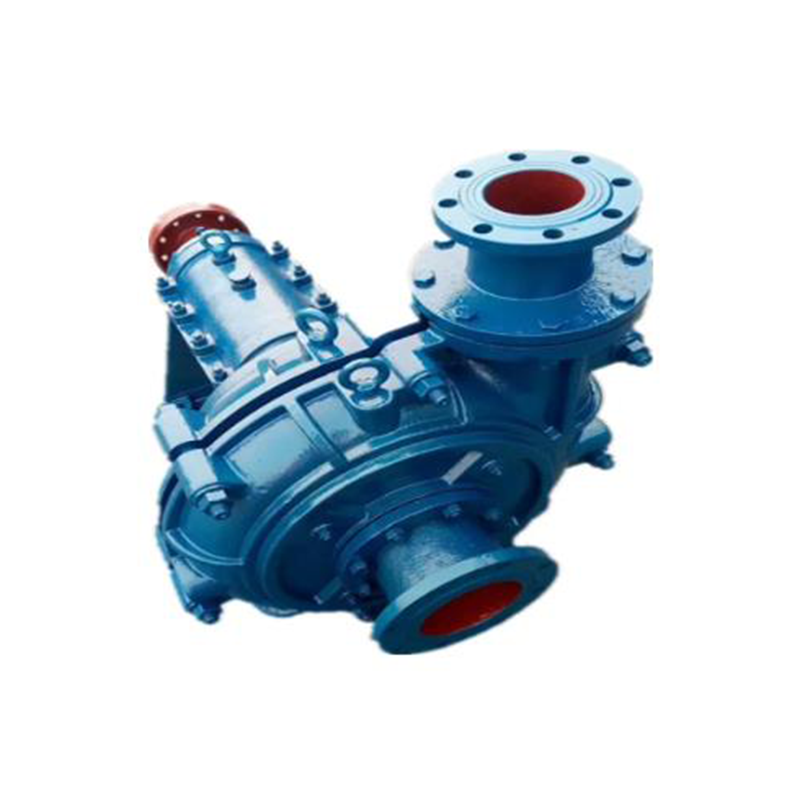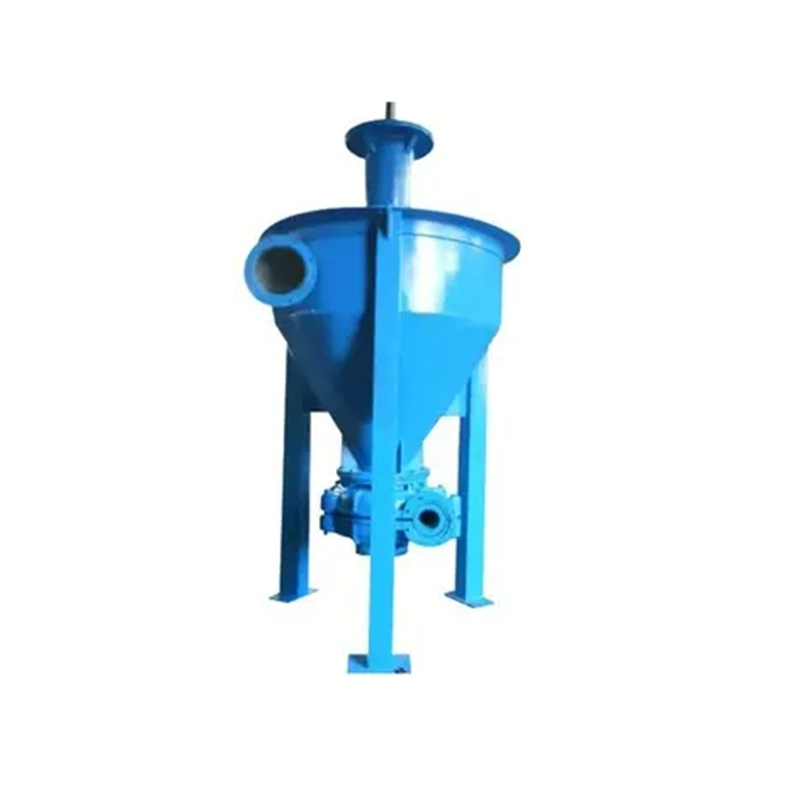Online
M.AH.HH slurry pump
Shaft seal (seal): The shaft seal types of the pump include packing seal, impeller seal, and mechanical seal. Transmission mode: There are V-belt transmission, elastic coupling transmission, gear reduction box transmission, hydraulic coupling transmission, frequency conversion drive device, thyristor speed regulation, etc. Among them, V-belt transmission includes CL, CV, CR, ZL, ZV, and ZR transmission.
- Overall Performance:
The pump has a wide performance range, good cavitation performance and high efficiency. Multi-stage series technology can be used to meet long-distance transportation. There are a variety of metals available for the flow-through parts, and the depth is increased. A variety of speeds and a variety of variants are used to enable the pump to operate under industrial and mining conditions. It has a long service life and high operating efficiency, and can meet many types of harsh transportation conditions.
Working principle of slurry pump
First, let's talk about the relationship between centrifugal pumps and slurry pumps, and then the principle of slurry pumps will naturally become clear. The concept of centrifugal is from the original pump. There are many kinds of pumps, which can be divided into dozens of categories according to different angles. Centrifugal pumps are divided from the working principle of the pump, which is the process of pressurizing the conveying medium through the action of centrifugal force. In addition, there are common types including screw principle, plunger principle, etc., which can be divided into pumps different from centrifugal principles. After talking about the concept of centrifugal pumps, let's talk about slurry pumps. Slurry pumps are divided from another perspective, that is, from the conveying medium. As the name suggests, slurry pumps convey a mixture of solid particles containing slag and water. But in principle, slurry pumps are a type of centrifugal pump. In this way, these two concepts are explained clearly.
The main working parts of a centrifugal pump are the impeller and the casing. The impeller device in the casing is located on the shaft and connected to the prime mover to form a whole. When the prime mover drives the impeller to rotate, the blades in the impeller force the fluid to rotate, that is, the blades do work on the fluid along its direction of movement, thereby forcing the pressure potential energy and kinetic energy of the fluid to increase. At the same time, under the action of inertial force, the fluid flows from the center to the edge of the impeller, and flows out of the impeller at a very high speed, enters the extrusion chamber, and is discharged through the diffuser. This process is called the water pressure process. At the same time, because the fluid in the center of the impeller flows to the edge, a low-pressure area is formed in the center of the impeller. When it has sufficient vacuum, under the action of the suction end pressure (generally atmospheric pressure), the fluid enters the impeller through the suction chamber. This process is called the water absorption process. Due to the continuous rotation of the impeller, the fluid is continuously discharged and inhaled, forming a continuous operation.
The working process of a centrifugal pump (including a slurry pump) is actually a process of energy transfer and conversion. It transfers the mechanical energy of the high-speed rotation of the motor through the blades of the pump and converts it into the pressure energy and kinetic energy of the pumped fluid.
AH type M type HH type fractional slurry pump application
Slurry pumps can be widely used in mining, power, metallurgy, coal, environmental protection and other industries to transport slurries containing abrasive solid particles. Such as slurry transportation in metallurgical ore dressing plants, hydraulic ash removal in thermal power plants, coal slurry and heavy medium transportation in coal washing plants, dredging of rivers, river silt removal, etc. In the chemical industry, some corrosive slurries containing crystals can also be transported.
First of all, in the application of ore dressing plants, about 80% are used in ore dressing plants in the mining industry. Due to the harsh working conditions of the primary selection of ore, the service life of slurry pumps is generally low in this section. Of course, different ores have different abrasiveness. For example, in the section of concentrate transportation, the relative abrasiveness is reduced, and the overall service life of the pump is also longer. Therefore, when users generally ask about the service life of suppliers' products during the procurement process, strictly speaking, no manufacturer will promise an accurate service life cycle to users without basis, because the service life of the flow-through parts (wear-resistant and corrosion-resistant parts) depends on many different factors, and the diversity and complexity of the working conditions lead to differences in the service life of materials of the same quality. However, in the early selection stage, powerful manufacturers can be asked to make reasonable working condition selection and design for them.
Secondly, in the power industry, it is mainly thermal power plants. At present, the power plants in my country are mainly thermal power generation and hydropower generation. In thermal power plants, due to the large amount of coal-fired power generation, the slag or ash after coal combustion needs to be removed. The slurry pump is used to remove the ash. After mixing a certain amount of water, the slag is transported to the place where the ash is piled by the slurry pump. Therefore, sometimes the slurry pump is also called ash pump in the power plant.
Thirdly, in the coal washing industry, due to different working conditions, large coal blocks and coal gangue are easy to block, and the design requirements for slurry pumps are very high. In 2005, a coal washing plant under the Huaibei Mining Bureau adopted a specially designed slurry pump to replace the original slurry pump imported from Australia. It has been operating normally so far, transporting large coal blocks and coal gangue without blockage, and its service life exceeds that of imported pumps from abroad.
In the field of seawater sand selection, the application of slurry pumps has also begun to be gradually recognized by customers. However, when selecting sand in seawater and digging sand in rivers, slurry pumps are more likely to be called sand pumps and dredging pumps. Although the names are different, they can be generally called slurry pumps in terms of structural characteristics and pump performance principles. Therefore, we often call it sand pump in seawater sand selection, and dredging pump in river dredging.
Although slurry pumps are widely used, correct application is very important. Due to the limitations of the name itself, slurry pumps have caused some people outside the industry to misunderstand it. In fact, mud pumps, impurity pumps, dredging pumps, dredging pumps, etc. are all within the application range of slurry pumps. In the application process of slurry pumps, it is important to pay attention to reasonable design
, correct calculation, and appropriate selection. These points are very important.
- AH slurry pump performance parameter table:
| model | Allowed to wear | Clean water performance | impeller | ||||||
| Maximum Power | Flow Q | Lift H | Speed |
Highest efficiency η |
NPSH | Number of blades | Impeller diameter | ||
| (kw) | (r/min) | (%) | (NPSH) | ||||||
| (m³ /h) | (L/S) | (m) | (mm) | ||||||
| 1 1 / 2 /1 B—AH | 15 | 12.6-28.8 | 3.5-8 | 6--68 | 1200-3800 | 40 | February 4 | 5 | 152 |
| 1 1 / 2 /1 C—HH | 30 | 16.2-34.2 | 4.5-9.5 | 25-92 | 1400-2200 | 20 | 2-5.5 | 5 | 330 |
| 2/1 1 / 2 B—AH | 15 | 32.4-72 | September 20 | 6--58 | 1200-3200 | 45 | 3.5-8 | 5 | 184 |
| 3/CD—AH | 30 | 39.6-86.4 | November 24 | 12-64 | 1300-2700 | 55 | April 6 | 5 | 214 |
| 3/2D—HH | 60 | 68.4-136.8 | 19-38 | 25-87 | 850-1400 | 47 | 3-7.5 | 5 | 457 |
| 4/3C—AH | 30 | 86.4-198 | 24-55 | 9-52 | 1000-2200 | 71 | April 6 | 5 | 245 |
| 4/3D—AH | 60 | ||||||||
| 4/3C—AH | 30 | 97.2-194.4 | 27-54 | 9-53 | 1000-2200 | 55 | 3 | 240 | |
| 4/3D—AH | 60 | ||||||||
| 4/3E—HH | 120 | 126-252 | 35-70 | 12-97 | 600-1400 | 50 | February 5 | 5 | 508 |
| 6/4D-AH | 60 | 162-360 | 45-100 | 12-56 | 800-1550 | 65 | May 8 | 5 | 365 |
| 6/4E-AH | 120 | ||||||||
| 6/4D-AH | 60 | 180-396 | 50-110 | 7-61 | 600-1600 | 55 | March 8 | 4 | 372 |
| 6/4E-AH | 120 | 180-396 | 50-110 | 7-61 | 600-1600 | 55 | March 8 | 4 | 372 |
| 6/4D-AH | 60 | 144-324 | 40-90 | 10-52 | 800-1600 | 55 | 4.5-9 | 2 | 371 |
| 6/4E-AH | 120 | ||||||||
| 6/4D-AH | 60 | 162-360 | 45-100 | 21-64 | 1000-1600 | 55 | 2 | 371 | |
| 6/4E-AH | 120 | ||||||||
| 6/4D-AH | 60 | 126-288 | 35-80 | 10-55 | 800-1600 | 58 | 2-2.5 | 2 | 365 |
| 6/4E-AH | 120 | ||||||||
| 6/4S-HH | 560 | 324-720 | 90-200 | 30-118 | 600-1000 | 64 | March 8 | 5 | 711 |
| 6S-H | 560 | 468-1008 | 130-280 | 20-94 | 500-1000 | 65 | April 12 | 5 | 711 |
| 8/6E-AH | 120 | 360-828 | 100-230 | 10-61 | 500-1140 | 72 | February 9 | 5 | 510 |
| 8/6R-AH | 300 | ||||||||
| 8/6E-AH | 120 | 360-828 | 100-230 | 7-70 | 400-1140 | 70 | March 6 | 8 | 536 |
| 8/6R-AH | 300 | ||||||||
| 8/6E-AH | 120 | 360-828 | 100-230 | 7-52 | 400-1000 | 70 | 2.5-6 | 4 | 536 |
| 8/6R-AH | 300 | 360-828 | 100-230 | 7-52 | 400-1000 | 70 | 2.5-6 | 4 | 536 |
| 8/6E-AH | 120 | 288-648 | 80-180 | 5-47 | 400-1100 | 60 | March 6 | 2 | 510 |
| 8/6R-AH | 300 | ||||||||
| 8/6T-HH | 1200 | 576-1152 | 160-320 | 32-95 | 450-725 | 65 | June 10 | 5 | 965 |
| 10/8E-M | 120 | 540-1228 | 150-340 | 15-61 | 600-1100 | 70 | 4.5-8 | 4 | 549 |
| 10/8R-M | 300 | ||||||||
| 10/8E-M | 120 | 504-1080 | 140-300 | 18-66 | 700-1100 | 62 | 4.5-7.5 | 4 | 549 |
| 10/8R-M | 300 | ||||||||
| 10/8E-M | 120 | 666-1440 | 185-400 | 14-60 | 600-1100 | 73 | April 10 | 5 | 549 |
| 10/8R-M | 300 | ||||||||
| 10/8ST-AH | 560 | 612-1368 | 170-380 | 11-61 | 400-850 | 71 | April 10 | 5 | 686 |
| 12/10ST-AH | 560 | 936-1980 | 260-550 | 7-68 | 300-800 | 82 | 6 | 5 | 762 |
| 720-1620 | 200-450 | 7-45 | 300-650 | 80 | 2.5-7.5 | ||||
| 14/12ST-AH | 560 | 1260-2772 | 350-770 | 13-63 | 300-600 | 77 | March 10 | 5 | 965 |
Cooperation Process
Requirement Communication
- After initial contact, the client manager will conduct a detailed needs analysis, collecting information on pump usage environment, flow rate, pressure, etc. The technical team will then develop a preliminary solution and provide detailed product information and recommendations.
Technical Selection
- After detailed product recommendations and technical consultations, the client confirms the selection. We will provide a quotation and contract to ensure that technical and business terms are clear.
Workshop Production
- After signing the contract, we will formulate and execute a production plan to ensure product quality and progress, while the client can track the production status in real-time.
Factory Testing
- Upon completion of production, we conduct comprehensive quality testing and provide detailed test reports and certificates to ensure the products meet standards and client requirements.
Installation and Commissioning
- We offer on-site installation, commissioning, and training services to ensure optimal pump performance and that clients can operate and maintain the equipment correctly.
After-Sales Support
- We provide 24-hour customer service and maintenance and warranty services to ensure timely resolution of issues, and regularly inspect equipment to maintain long-term stable operation.
Continuous Improvement
- Collect customer feedback to continuously optimize product and service quality. We adapt to market changes and client needs by continually improving and upgrading products to maintain industry leadership.
Client Service
and Technical Support
Customer Support
We provide 24-hour hotline and online support to ensure that customers receive timely technical support and problem solutions via phone, email, or online platforms.
After-Sales Service Description
We provide technical support and local repair advice to help customers resolve issues encountered with product use.
Technical Consultation
We offer detailed product manuals and technical documentation, and assist customers in resolving technical issues through remote diagnostics and technical guidance.
Quality Assurance
We provide technical support and maintenance advice to help customers address faults caused by product quality issues and offer appropriate solutions based on fault information and purchase proof.
After-Sales Assurance
We offer warranty services to ensure repair or replacement of products with quality issues during the warranty period and encourage customers to provide feedback to help us improve products and services.
Service Commitment
We commit to responding to customer issues within 24 hours and continuously improving service processes and measures to ensure the best customer experience.
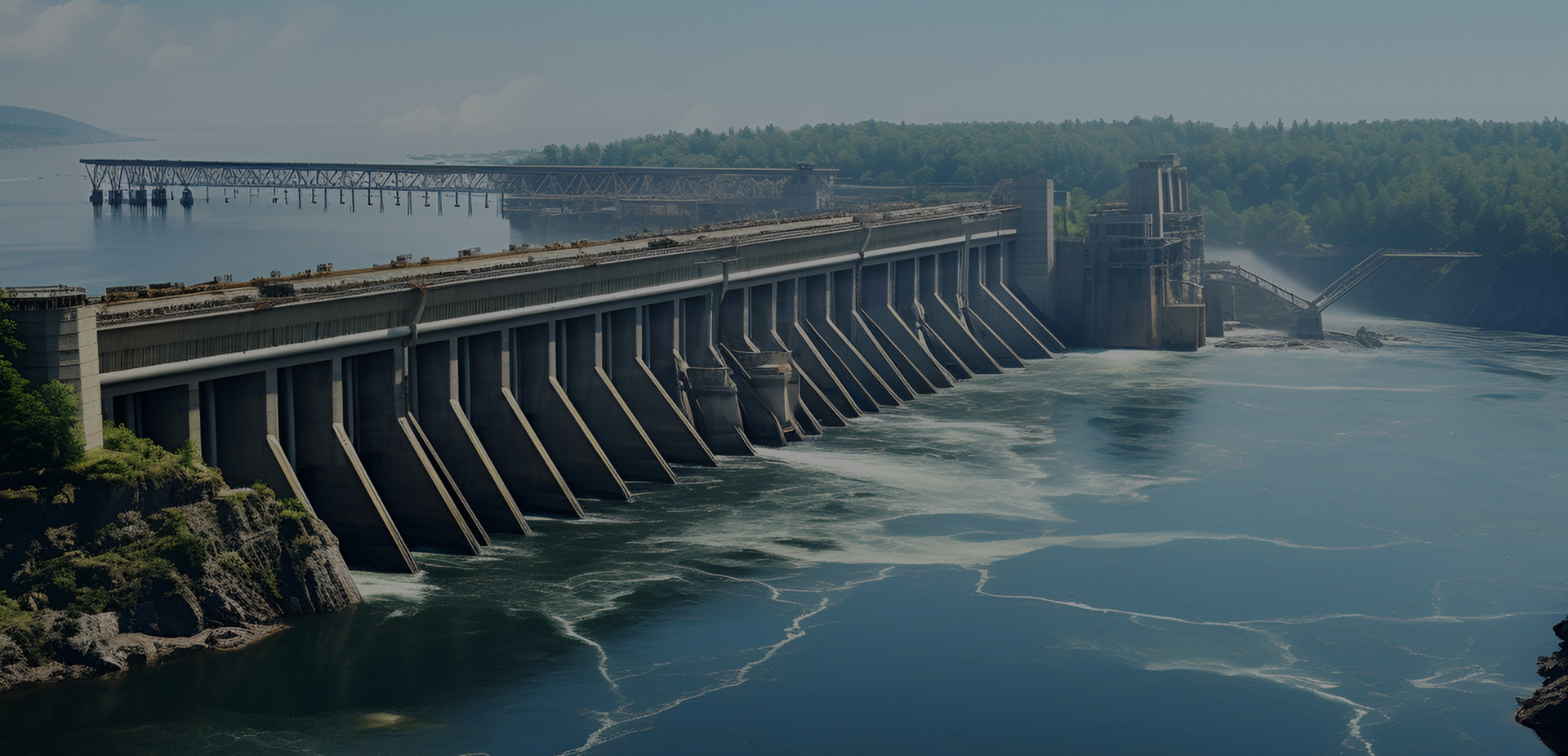
Contact Us




